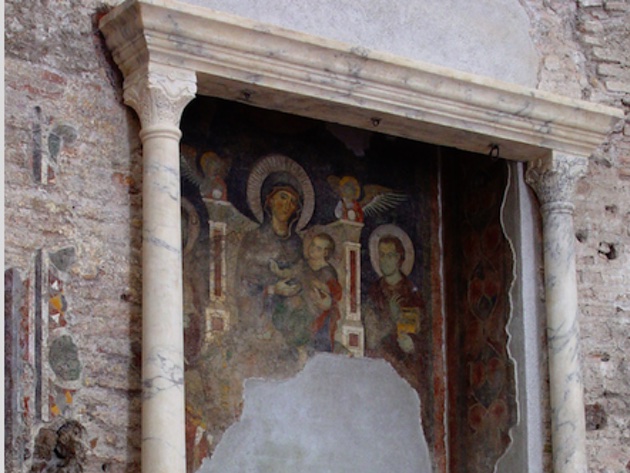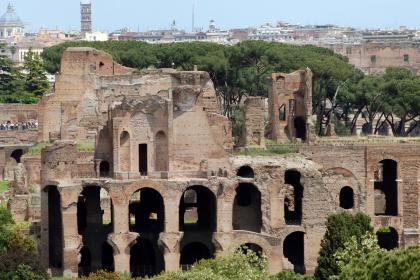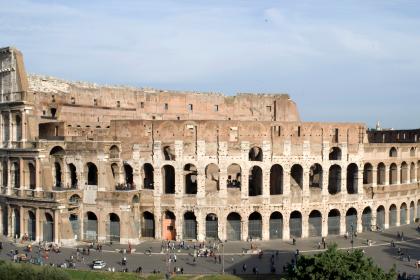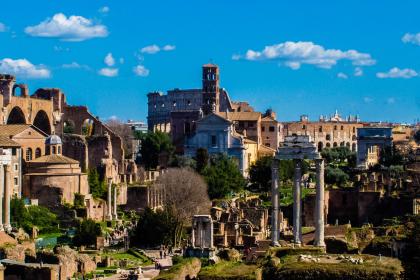
The so-called Temple of Romulus stands in the archaeological area of the Roman Forum, between the Temple of Antoninus and Faustina and the Basilica of Maxentius. The small building was originally built as a circular vestibule leading to the Temple of Peace, but after the abandonment of the imperial complex, Maxentius, according to medieval tradition, reused it as a temple dedicated to his son, Valerius Romulus, who died prematurely in 309 AD. and deified. Subsequently, when a hall of the Temple of Peace was transformed into the Basilica of Saints Cosmas and Damian in the 6th century AD., it was used as a vestibule of the church.
Circular in shape, the small temple has a domed roof and is entirely built of bricks; it is preceded by a concave façade in which there are four niches where statues were present. The portal is flanked by two porphyry columns, with white marble capitals, which support a frame, also made of white marble, carved with a rich decoration; the bronze door is one of the few roman ones still in existence (another is that of the Curia Iulia in the Basilica of San Giovanni in Laterano) and still has a perfectly functional lock. Inside the small temple there are several wall decorations: paintings imitating curtains or veils that originally decorated the walls can be dated to the mid-13th century, while in the niche on the left is represented Christ on the throne between Mary Magdalene and Maria Salomè. To the left of the entrance is a funerary monument consisting of a tabernacle with the Madonna enthroned with Child among the Medici Saints in the centre: the painting is attributed to Jacopo Torriti and can be dated to the end of the 13th century.
Today we know for sure that the building was dedicated neither to the mythical founder of Rome nor to Romulus the son of Maxentius: one of the most accredited hypotheses, until recently, was that it was the Temple of the Penates, but recently scholars seem more oriented towards the identification of the building with the Temple of Jupiter Stator, founded, according to legend, by Romulus where the Romans, pursued by the Sabines after the rape of the Sabine Women, defended themselves strenuously.
Photo credits: courtesy of Colosseum Archaeological Park official site
Foro Romano y Palatino

 Condividi
Condividi
Anfiteatro Flavio (El Coliseo)

 Condividi
Condividi
Zona arqueológica de los Foros Imperiales

 Condividi
Condividi
Informaciones
verify opening of the monument in https://colosseo.it/en/super-sites/.
Opening hours of the Archeological siteof the Roman Forum.
 Condividi
Condividi
Location
Para conocer todos los servicios de accesibilidad, visite la sección Roma accesible.











































